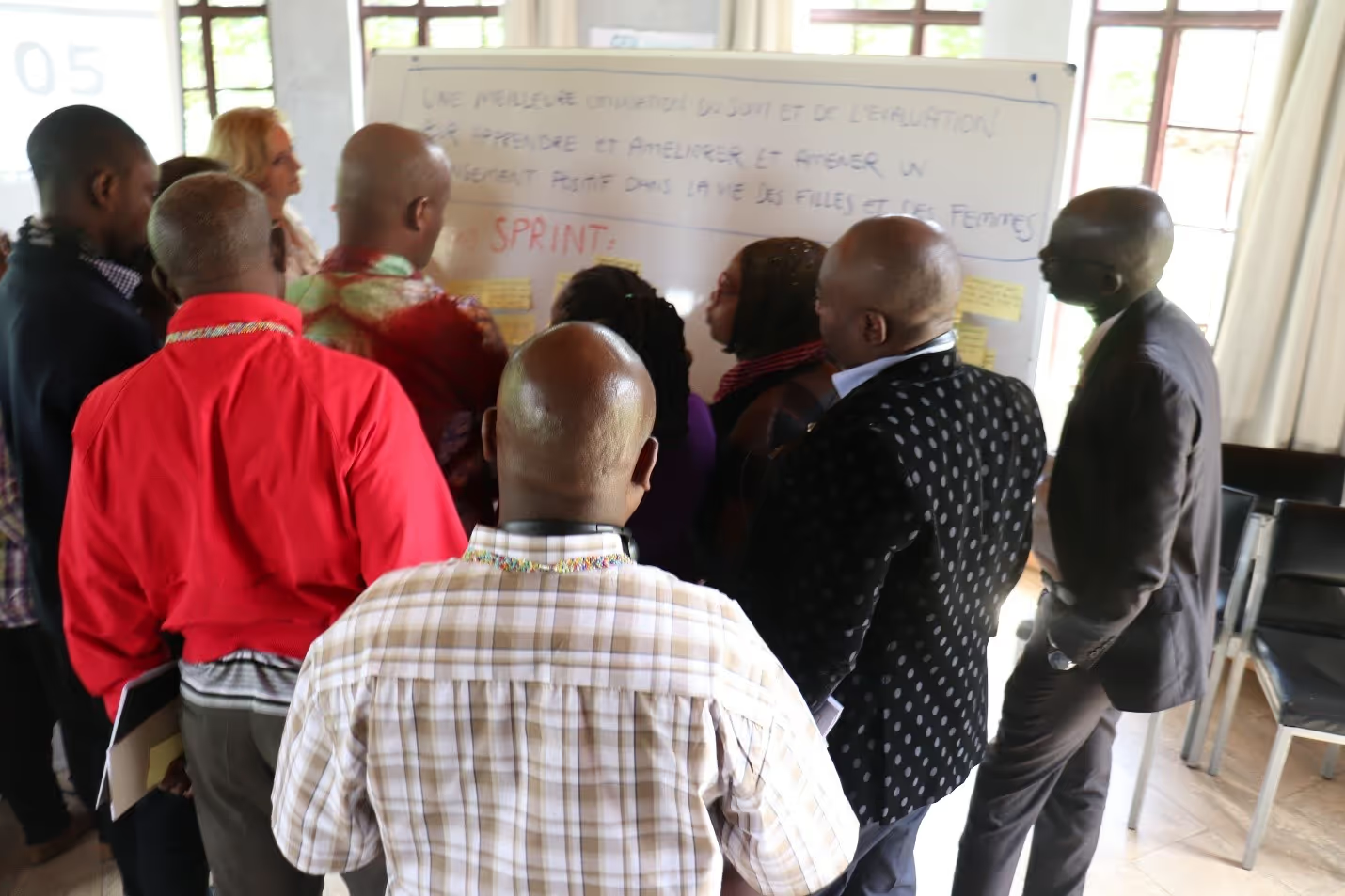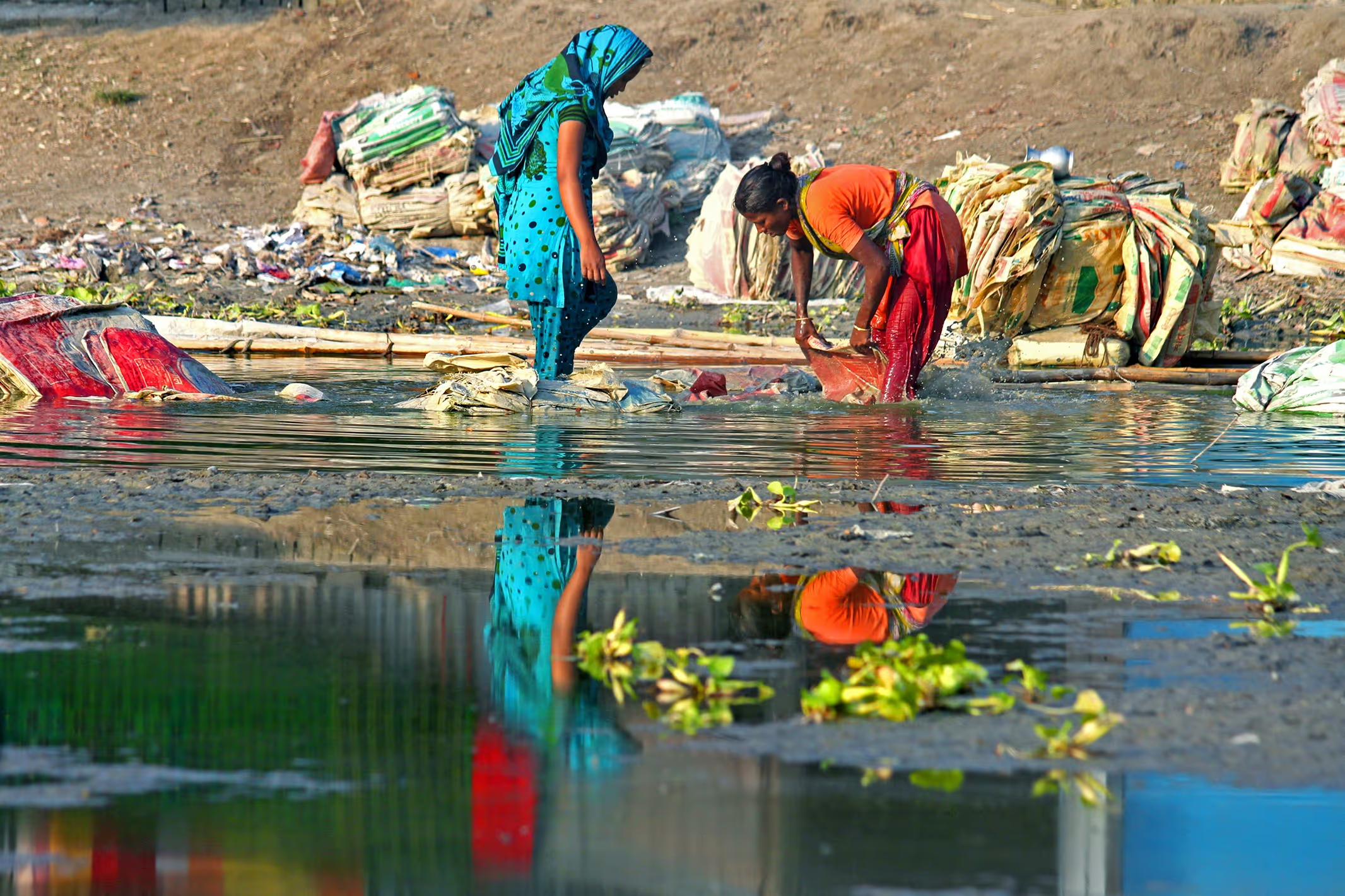The “SPRINT” to innovative local-perspective solutions for better measurement of GBV programming outcomes

“Dig in deep to identify the key root causes and barriers that challenge the measurement of our current GBV programming and propose innovative solutions to improve the lives of women and girls we serve.”
The above quote states the purpose of a three-day workshop held by International Rescue Committee (IRC) in May 2019 in Nairobi. Here, a multi-disciplinary team of Women’s Protection and Empowerment (WPE), Health, and Measurement experts from Burundi, Democratic Republic of Congo (DRC) and Tanzania met to brainstorm with local partners and private sector innovators.
Financed by Elrha's Humanitarian Innovation Fund (HIF), this initiative was a perfect opportunity for the IRC’s Great Lakes Region to do three things:
- Deep dive on a common signature outcome for all three country programmes, “Women and girls are protected from and treated for the consequences of gender based violence”
- To take a local perspective to define the key barriers to measurement
- Develop “field suitable” innovative solutions.
While new to the IRC participants, the Design Sprint methodology is a tried and tested iterative process. It helps identify common problems/challenges, answer critical questions and ensure that you are developing the right solution. A key successful element of the methodology is the selection of “deciders” who ensure the process moves along when making decisions is difficult. The agreed goal for this Sprint was, “to better use M&;E to improve GBV programming for our clients.”
Step 1: Key Challenges Identified
Key challenges hindering effective measurement and use of data to achieve better services for GBV Survivors were identified as part of the SPRINT approach. As a result, the following questions arose:
- How do we develop a monitoring system for survivors which allows us to bring together several different services, and have complete information from the beginning until the end of a survivor’s journey?
- How do we stop working in silos but rather work together to collect and analyse information about our services in a holistic way?
- How could we leverage the bringing together of essential Health and WPE data to improve our ability to speak to the achievement of outcomes at country level, regional and eventually global level so as to increase advocacy for survivors?
- How can we improve the quality of and access to GBV programme data so that decision makers can make good decisions?
Step 2: Stimulate Innovative Thinking
To stimulate different kinds of creative and innovative thinking, we invited external private sector innovators and GBV experts. They shared their experiences and innovations to help generate new ideas from the participants.
We were joined by Samuel Hall (iREP), Mezzanine/Safaricom (Aita health)/Safaricom, and Ushahidi. Having external innovators with different perspectives and inspiring stories spurred participants to look at old challenges in new ways, and think beyond the obvious solutions.
Humanitarian workers are creative. If we weren’t, we wouldn’t make it in a sector that demands ‘out of the box thinking’ on a daily basis. Sometimes, however, we get stuck within the limitations of resources, security, HR, low-resource settings, and other factors.
The external inspiration brought to the table, in combination with the wealth of knowledge and experience in the room, resulted in two solutions to our identified GBV Monitoring and Evaluation (M&;E) problems.
- Building on an integrated health and WPE “SUPERPRIMERO” information management system. This will allow comprehensive support and follow up of each of GBV survivor from start to finish – including the possibility of data aggregation at country, regional and global level.
- Institutionalisation of a process that will increase accountability with regard to the use of data for decision making and follow up actions. Thereby ensuring that data is of high quality and accessible via an interactive dashboard.
Step 3. Act on Solutions
For the IRC, the next step is simple - find the resources to make this solution concrete.
We will continue to work together at all levels for testing and implementation of identified initiatives. We can then ensure the needed improvements in measuring outcomes for women and girls in humanitarian contexts keep moving forward.
Photo Caption: Participants at the Sprint workshop, Nairobi, May 2019. Credit: IRC.
Stay updated
Sign up for our newsletter to receive regular updates on resources, news, and insights like this. Don’t miss out on important information that can help you stay informed and engaged.
Related articles



Explore Elrha
Learn more about our mission, the organisations we support, and the resources we provide to drive research and innovation in humanitarian response.